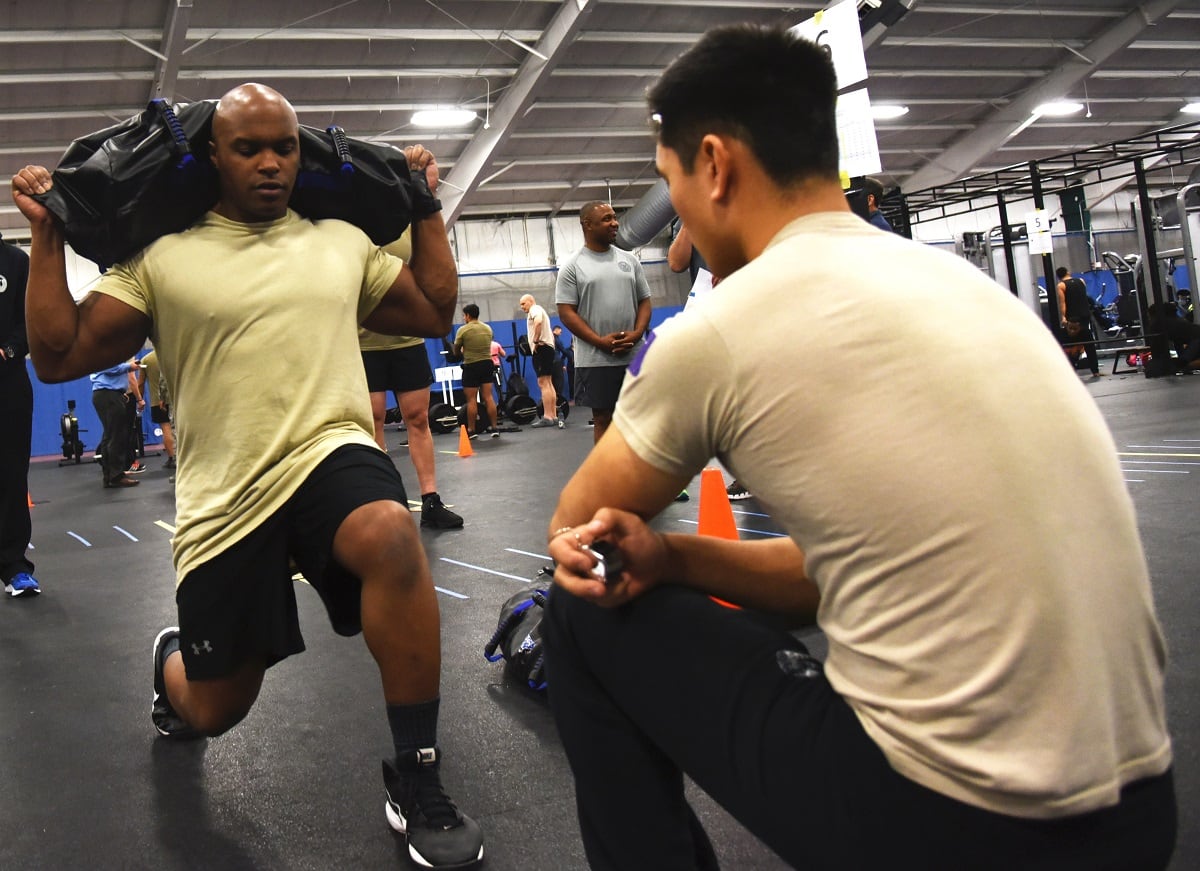The Air Force is developing a new formula that it hopes will provide a more accurate measure of fitness vs fatness — and could possibly result in a gender-neutral fitness test for all airmen.
The new formula will measure airmen’s aerobic fitness against their body composition to come up with a fitness score, Neil Baumgartner, chief of the Air Force’s exercise science unit, said Tuesday at a meeting of the Defense Advisory Committee on Women in the Services.
Baumgartner said the military’s focus on weight loss is a failed approach — one that it needs to get away from. Instead, aerobic fitness is key.
There is an "inextricable link between aerobic fitness and body composition,” Baumgartner said. “We’ve got to teach our airmen that.”
Baumgartner wants to measure an airman’s “VO2 max” score — a fitness standard that measures the maximum amount of oxygen a person can use while exercising intently — while running, and making that the numerator in the formula. For example, he said someone running a mile and a half in 10 minutes and 23 seconds could have a VO2 max score of 50, which is on the more fit end of the scale.
For the denominator, he suggested the Air Force divide an airman’s waist circumference by his height. An airman in that hypothetical situation who had a 35-inch waist and was 70 inches tall would end up with a denominator of 0.5. And with a VO2 max score of 50 in the numerator, and a denominator of 0.5 would result in a score of 100, in this scenario.
This score would result in a “fitness-fatness index" that would measure the link between aerobic fitness and body composition, he said. It also would take differing statures into account so very tall airman would not be at a disadvantage.
Even more importantly, Baumgartner said, it would be a gender-neutral test — one that could possibly apply to all airmen.
RELATED

The Air Force has already rolled out a series of “Tier 2” fitness standards that are gender-neutral and tailored specifically for certain jobs that are very physically active, including battlefield airmen career fields. Tactical air control party airmen, air liaison officers, and explosive ordnance disposal airmen are a few of the career fields that have adopted or tested their own Tier 2 standards.
A crucial part of the Tier 2 standards — the design of which was led by Baumgartner — is that it measures an airman’s ability to do the job, regardless of their gender.
The new fitness-fatness index could be a gender-neutral way to measure fitness for not just battlefield airmen and other Tier 2 airmen, he said, but also possibly the majority of “Tier 1” airmen who aren’t in such physically demanding jobs.
Baumgartner said that the research on this new index is done, but the challenging work of setting the “thresholds” for measuring airmen still remains.
“That’s no small task,” he said.
But one way or another, Baumgartner said, the military needs to “kill the terminology” of prioritizing weight loss.
“We don’t necessarily want our members to lose weight,” Baumgartner said. “We want them to lose fat if they are over-fat.”
Scales alone can be unreliable ways to measure whether someone is too fat, he said, since hydration levels can vary how much a person weighs on any given day. Body composition tests — or even better, central adiposity tests that measure fast in the lower torso — are more reliable ways to measure if someone is carrying too much fat, and where the fat is located on his body.
“If we really want to educate our airmen on that, ... get them off the habit patterns of minding what the scale tells them,” Baumgartner said.
For long-term health benefits, according to a slide Baumgartner prepared for the presentation, the Air Force needs to concentrate on improving airmen’s fitness by increasing their physical activity — not just by controlling their weight primarily through their diet.
Shawn Snow contributed to this report.
Stephen Losey is the air warfare reporter for Defense News. He previously covered leadership and personnel issues at Air Force Times, and the Pentagon, special operations and air warfare at Military.com. He has traveled to the Middle East to cover U.S. Air Force operations.





